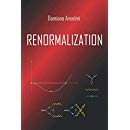Archive for October 2025
Theories with purely virtual particles (fakeons) do not possess a classical action in the strict sense, but rather a “classicized” one, obtained by integrating out the fake particles at tree level. Although this procedure generates nonlocal interactions, we show that the resulting classicized equations of motion are not burdened with the need to specify infinitely many initial conditions. The reason is the inherent link between the fakeonic system and the parent higher-derivative local system: the solution space of the former is an appropriate subspace of solutions of the latter. A somewhat unexpected proviso is that, in order to avoid overcounting, the fakeon prescription must be obtained as a limit or special case of a more generic prescription. Ultimately, the number of degrees of freedom matches physical expectations, the extra ones (ghosts or otherwise) being removed by rendering them purely virtual. We illustrate the counting in simple linear solvable models and provide the general proof. Along similar lines, we analyze Dirac’s removal of runaway solutions in classical electrodynamics.
In the context of field theories with complex poles, we scrutinize four inequivalent ways of defining the scattering amplitudes, each forfeiting one or more tenets of standard quantum field theory while preserving the others: (i) a textbook Wick rotation by analytic continuation of the external momenta from Euclidean to Lorentzian signature (no optical theorem), (ii) the Lee–Wick–Nakanishi prescription, integrating along a certain contour in the complex energy plane (no Lorentz invariance), (iiii) the fakeon prescription, where, in addition, spatial momenta are integrated on a complex path defined by the locus of singularities of the loop integrand (no analyticity of the amplitude) and (iv) to work directly on Minkowski spacetime, which violates the optical theorem and also bars power-counting renormalizability. In general, mixed Euclidean-Lorentzian prescriptions for internal and external momenta in loop integrals break Lorentz invariance, regardless of the type of masses involved. We conclude that, of the above four options, only the fakeon prescription is physically viable and can have applications to quantum gravity.
J. High Energy Phys. 05 (2025) 145 | DOI: 10.1007/JHEP05(2025)145

 Quantum Gravity
Quantum Gravity 


